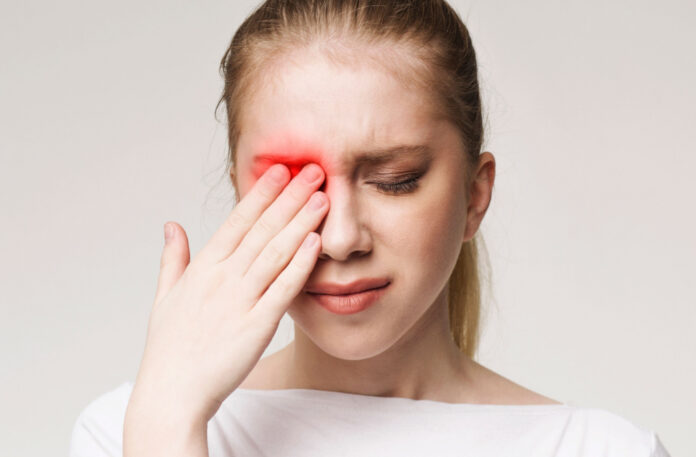What is Commonly Misdiagnosed as Pink Eye?
Most people think pink eye-or conjunctivitis-is just a simple bug that turns the eye red and watery. The truth is that while oily red lids, discomfort, and tears can scream pink eye, those signs pop up in other eye issues too. Because of that overlap, well-meaning parents, teachers, and even doctors sometimes leap to the pink-eye conclusion. And that snap judgment can steer a person toward the wrong drops, cost valuable time, or let a real threat linger.
Knowing what else can masquerade as conjunctivitis helps everyone chase the right treatment sooner and dodge bigger headaches down the road. So, lets walk through the main lookalikes and learn the telltale clues that set them apart.
Read more: Painting Succulents Harms Health
Why Getting It Right Matters
When the wrong label gets slapped on an eye problem, bad things can follow:
– The real issue keeps getting worse.
– People waste money on needless antibiotic drops.
– Contagious causes, like some viruses, spread to friends or co-workers.
– Pain, blurry vision, or swelling sticks around longer than it should.
Remember, not every red eye comes from a virus. Plenty of allergies, injuries, or even serious diseases show up as angry-looking lids, so staying curious matters.
Common Conditions That Mimic Pink Eye
Heres a round-up of imposters that look like pink eye but need their own game plan.
1. Allergic Conjunctivitis
One of the biggest mix-ups is calling every red eye pink eye when its really an allergic reaction. Allergic conjunctivitis kicks in when your eyes bump into pollen, pet fur, or dust mites.
- Both problems turn your eyes red and leave tears running down your cheeks.
- Diff-erently, eye allergies set off monster itching that bacteria cant cause.
The itch usually hits both eyes at once instead of just one. If your peepers burn and water during blooming weeks or after cuddling the cat, odds are its allergies. A quick spray of over-the-counter antihistamine drops often beats antibiotic liquid.
– Bolded LSI Keywords in this section: seasonal allergies, pollen irritation, itchy eyes, eye allergy relief, red eyes from dust, eye discharge from allergies, antihistamine eye drops
2. Dry Eye Syndrome
People who fight dry eyes day after day often confuse the burn and itch with conjunctivitis. Stay alert to these telltale signs:
- Dry eye wont spread to your friend.
- Discomfort spikes after hours of scrolling or sitting by an open window.
- Its a regular guest for contact wearers, too.
If screens and strong airflow fill your day or your town sits in a desert breeze, think dry eye instead of pink eye. Your eye doc might hand you preservative-free artificial tears or soothing gels.
3. Blepharitis
Blepharitis is eyelid inflammation that people sometimes confuse with pink eye. It usually shows up as:
– red, swollen eyelids
– crusty eyelashes or flaky eyelids
– grittiness or burning eyes
Seborrheic dermatitis or bacterial overgrowth often causes the problem. Treat it by gently scrubbing the edges of your lids with a warm compress and a mild adult tear film imbalance baby shampoo.
4. Uveitis
Uveitis is serious swelling of the middle eye layer called the uvea. Warning signs include:
– severe eye pain
– extreme sensitivity to light
– blurry vision that worsens
Because meibomian gland dysfunction or autoimmune diseases like lupus can trigger it, dont delay care. Seek a doctor right away to protect your vision.
5. Stye or Chalazion
These small lumps show up on the eyelid and can copy the red look of pink eye. A stye often hurts and sits right at the edge of the lash line.
Differences:
* Localized bump
* Painful to touch
* No discharge unless infection spreads
* Chalazion-care tips include warm-compress for eye
Treatment usually calls for warm-compress for eye, plus topical antibiotic ointment if your doctor suggests. A stye or blocked-oil-gland bump often eases up without much fuss, even if it feels like a painful red-eye lump today.
6. Subconjunctival Hemorrhage
A tiny blood vessel bursts in the clear outer layer of the eye. Although the red blaze may shock you, the spot is harmless and fades on its own.
Key signs:
– Sudden appearance of a bright-red patch
– No ocular pain or vision change
– Caused by coughing, sneezing, or straining
Because it sits under the conjunctiva, you will not find any discharge, itchiness, or swollen lids that point to pink eye.
7. Corneal Abrasion
A tiny scratch on the clear front of your eye, the cornea, can look a lot like pink eye because it shares:
* Bright redness
* Watery tears
* Aching or grinding discomfort when you blink
If you also feel a gritty foreign body in the eye or notice blurred vision, an abrasion is more likely. Your doctor will add a glowing dye to confirm the cut.
scratched cornea, eye trauma symptoms, foreign object in eye, corneal scratch healing, accidental eye injury, blinking pain, abrasion in eye
8. Glaucoma (Acute Angle-Closure)
Acute-angle glaucoma is an eye emergency that starts off feeling like viral conjunctivitis but quickly grows serious.
Main signs include:
* Blindingly severe eye pain
* Nausea or vomiting
* Rainbow halos around lights
Get medical help right away to save your sight.
When to See a Doctor
If you notice symptoms lasting more than a few days or getting worse, head to an ophthalmologist or optometrist without delay. Pay special attention to these warning signs:
Persistent blurred vision
- Sharp eye pain that over-the-counter drops dont ease
- Extreme light sensitivity (photophobia)
- Redness accompanied by colored halos around lights
- Swelling of the eyelid or tissue around the eye
- Catching problems early not only eases discomfort but also cuts the risk of lasting damage.
How to Prevent Misdiagnosis at Home
You can take a few easy steps to stop pink eye from being mixed up with other eye problems:
– Never self-diagnose by Googling symptoms.
– Clean your hands often and sneeze into tissues.
– Leave contact lenses out whenever your eyes hurt.
– Dont borrow or reuse dropped bottles from friends.
– Take breaks, blink, and adjust brightness every hour.
Final Thoughts
Knowing what can look like pink eye helps patients and caregivers, teachers, or parents avoid a wrong call. Redness may seem small, yet labeling every sore eye as conjunctivitis can cover up signs of a serious eye infection. Allergies, dry eyes, or harder-to-treat troubles like uveitis or glaucoma also paint the same red picture.
The smartest move is to book an eye doctor visit any time doubt creeps in. A fast, clear optometrist consultation helps you heal quicker, keeps germs away from classmates, and guards your long-term vision.
FAQs
1. Can dry eyes look like pink eye?
Yes, dry eyes can turn red and feel scratchy, much like pink eye, but they usually dont have any gooey discharge or contagious signs.
2. Is it okay to use antibiotic drops for all red eyes?
Definitely not. Using antibiotic drops without a doctors ok can make some problems worse or lead to germs that dont respond to treatment. Always check with your eye doctor first.
3. How do I know if my red eye is from allergies?
If your eyes feel itchy, leak watery fluid, and the redness shows up in both eyes at the same time during pollen season, chances are its allergies.
4. Are all types of pink eye contagious?
Not quite. Viral and bacterial pink eye can spread from person to person, but allergic pink eye and redness from chemicals stay put and dont infect others.
5. What if my eye redness doesnt go away?
If the redness hangs on for days or gets worse, it could signal something more serious than pink eye, so book an appointment with your doctor right away.








